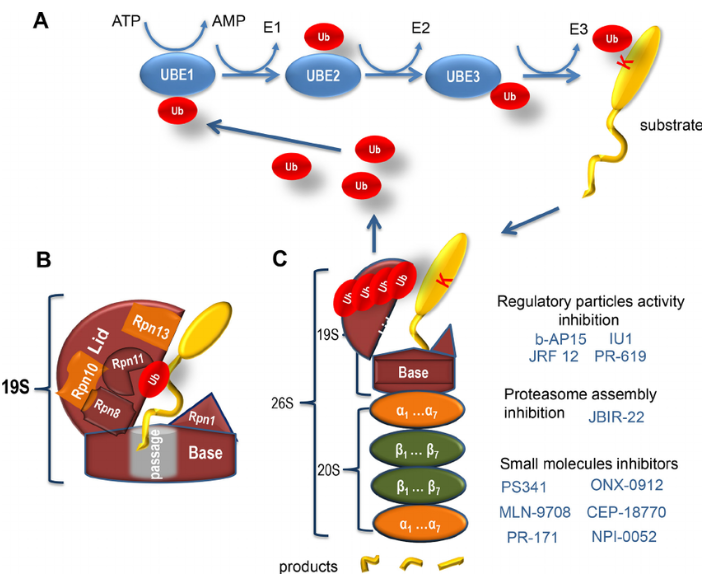Failure of a cell’s protein processing mechanism can lead to the accumulation of misfolded proteins, which can block cells, interfere with their function, and accelerate the development of diseases over time, including neurodegenerative diseases, amyotrophic lateral sclerosis And Alzheimer’s. In order to maintain the steady state of the body under changing conditions and different physiological needs, there are protein systems in the cells that can process damaged or unnecessary protein in time. Previous studies have shown that the main biochemical system used by cells to remove junk proteins is the ubiquitin-proteasome pathway. It involves labeling defective or unwanted proteins with ubiquitin molecules and labeling them as ubiquitinated proteins that can be destroyed by the cell’s protein processing unit, known as the 26S proteasome.

Recent research by the Harvard Medical School’s Bravatnick Institute (HMS) has shown that strenuous exercise, fasting, and multiple hormones can activate a cell’s built-in protein processing system and enhance its ability to clear out defective, toxic, or unwanted proteins . The findings, published on PNAS, reveal a previously unknown mechanism that was triggered by fluctuations in hormone levels, suggesting a change in physiological conditions. It was previously thought that the rate of protein degradation by the ubiquitin-proteasome system (UPS) depends only on its ubiquitination rate, and the 26S proteasome could rapidly and efficiently degrade ubiquitinated proteins. However, with the deepening of research, more and more evidence indicates that protein half-life also changes with changes in proteasome activity in different physiological and pathological conditions.Recent studies have demonstrated that phosphorylation of proteasome subunits by protein kinases can increase proteasome activity in mammalian cells. These kinases include protein kinase A (PKA), DYRK2, CaMKII, and PKG. Among them, clinical drug treatment can increase cAMP level by stimulating adenylate cyclase or inhibiting phosphodiesterase 4 (PDE4), and then enhance the ability of 26S proteasome to hydrolyze ubiquitinated protein, ATP and short peptide substrate. This activation is caused by PKA phosphorylating the 14-position serine on the 19S subunit Rpn6, which in turn results in the cell’s ability to hydrolyze misfolding and regulate proteins rapidly. Increasing the level of cAMP or PKA in cultured cells and mouse brain can effectively enhance the degradation ability of various misfolded and easily aggregated proteins, which are important factors causing major neurodegenerative diseases. Therefore, cAMP and PKA have clear therapeutic prospects in the treatment of neurodegenerative diseases.
Studies have shown that cAMP and PKA mediate the actions of many hormones and neurotransmitters, and regulate different cellular responses. Therefore, the researchers tested whether proteasome activation and enhanced degradation of UPS are also accompanied by changes in physiological conditions( such as exercise and fasting) of hormone responses and increased cAMP levels. A series of studies have found that a variety of hormones under exercise and fasting conditions activate adenylate cyclase by different ways, such as mobilization from energy sources (such as glucagon and adrenaline in the liver), increasing cardiac output ( Adrenaline), reabsorption in the renal water (antidiuretic hormone), these stimuli all have a promoting effect on cAMP levels, Rpn6 phosphorylation and proteasome activity, while the content of the proteasome itself does not change. Therefore, in vivo cAMP-PKA-mediated proteasome activation is a common cellular response to a variety of endocrine stimuli and rapidly enhances the ability of target tissues to degrade regulatory proteins and misfolded proteins (eg, proteins damaged during exercise). Increased destruction of existing regulatory proteins may help cells adapt their protein composition to new physiological conditions.
